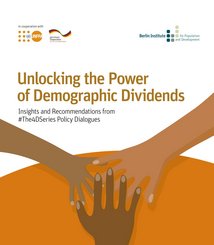
This report highlights the potential of targeted population policies to achieve demographic dividends.
Read more
Sub-Saharan Africa has the lowest per capita income and the highest population growth of any region in the world. Only by promoting economic development and creating new opportunities for its population can the continent escape the dual trap of poverty and high fertility. African agriculture, dominated by a majority of smallholders, has a key role to play in this context. Although African farmers are currently unable to feed the continent’s population, they may benefit from European experiences and innovation by avoiding their mistakes.
Leapfrogging, i.e. skipping certain stages of technological development, allows economies to achieve higher yields by using resources intelligently and efficiently. If African countries succeed in linking farmers to markets, processing a greater share of raw materials in the regions where they are grown and reinvesting the gains in value added, they can initiate the structural changes necessary in rural areas to turn agriculture into a driver of development.
The Berlin Institute would like to thank the Bayer Foundation and the Friends of the Berlin Institute for supporting this research project.
Freelance research associate
© Berlin-Institut
General inquiries
Telefon: +49 30 - 22 32 48 45
Contact via Mail: info@berlin-institut.org
© Berlin-Institut
Demographic change is not a disaster, but a challenge. Analyses and concepts are needed to master them successfully. The Berlin Institute for Population and Development provides these free of charge and makes a significant contribution to ensuring that important future issues are discussed on a broad basis and put on the political agenda. The non-profit Berlin Institute works on a non-partisan basis and receives no state funding whatsoever. Your donation therefore helps to maintain our independence and the high standard of our publications. Donations to the Berlin Institute are tax-deductible and can be made directly online using the donation button or by using a bank transfer form to the following account
Donation account
GLS Bank
IBAN DE15 4306 0967 1276 4833 00
BIC/SWIFT GENODEM1GLS
We thank you very much for your support!